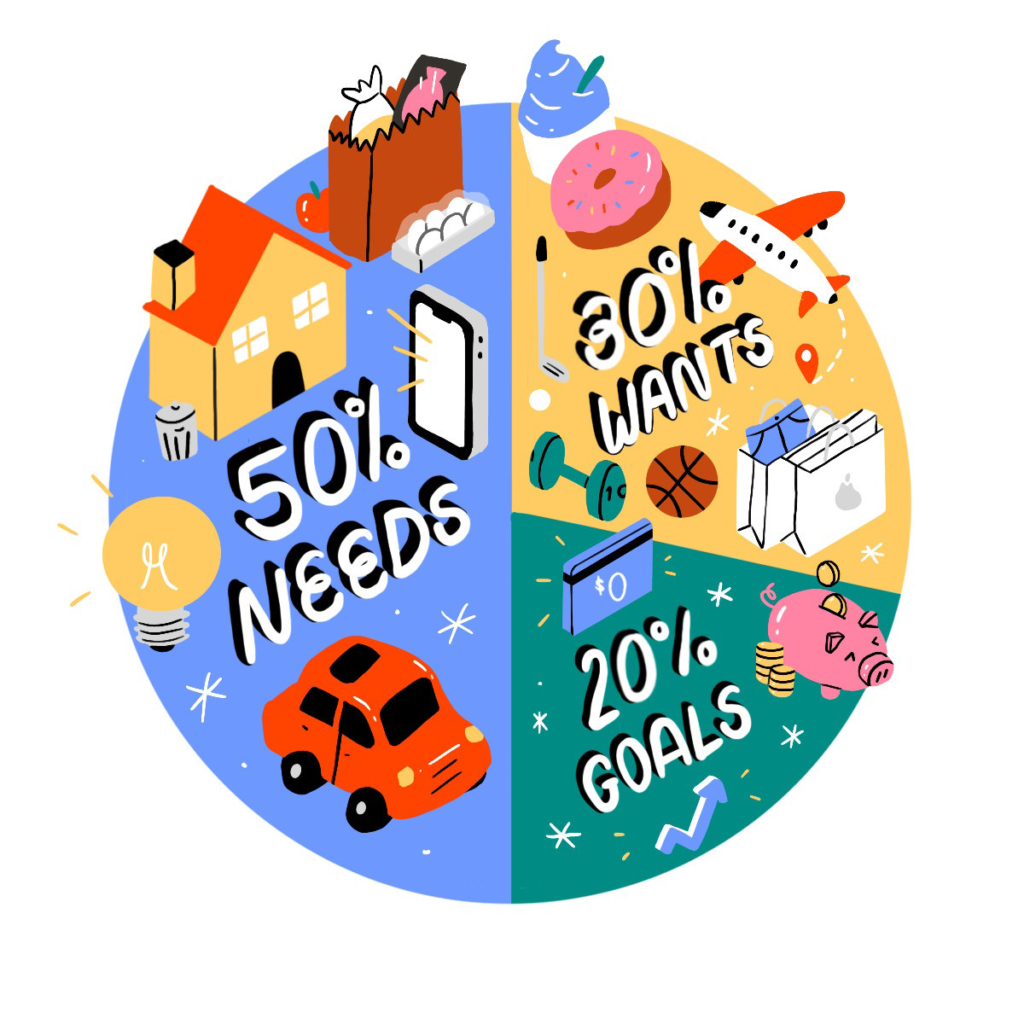
Here’s the thing—I’ve found that once you start getting a handle and understanding your budget, it’s not just about the numbers. Actually, it’s about gaining a sense of freedom and empowerment. These Track Your Budget tips is open and ecouraged for everyone! Not just students!
- Track Your Budget With Your Weekly Expenses
- Budget Tracking Apps
- Track your Budget with the 50-30-20 Rule
- Track Your Budget with Putting a $ Limit
- “Save First, Spend Later” Method
1. Track Your Budget With Your Weekly Expenses
Take a habit of just looking at your bank account each week (which I know it’s scary). But, it is a good thing. Take a calculator and calculate the difference of what you had last week and what you had now. Then, don’t forget to take out several one-time payment occurences that you had in the week. Either that be that fancy dinner or hosting a gathering.
Ta da! You are now left with what your “normal” weekly expenses are. Once you get it, you can in a great position of trimming the fat.
- Distinguish Essentials from Luxuries: Figure out what you really need versus what you want. Essentials are your must-haves, like rent and groceries. Luxuries? Well, that’s the extra stuff—like eating out or online shopping sprees. Once you know the difference, you can start scaling back on those non-essential buys.
- Track and Trim: Keep a close eye on where your money’s going each week. Spotted a pattern of spending too much on certain things? Time to trim it down. Maybe you’re grabbing takeout too often or splurging on things you don’t really need. Cutting back on these can make a big difference in your budget.
2. Budget Tracking Apps
You may have every heard of RocketMoney or YNAB or other apps. The fact is, there are a lot of applications out there that you can use to your liking on tracking your budget. Furthermore, these apps can connect to your bank accounts, categorize your expenses, and help you see exactly where your money is going.
Here are a couple of ways they can make your budgeting journey smoother:
- Automated Expense Tracking: Forget about manually logging every purchase. Many budget apps automatically categorize your spending, so you can see at a glance how much you’re spending on things like groceries, entertainment, or eating out.
- Setting and Sticking to Budgets: With a budget app, you can set spending limits for different categories. The app will alert you when you’re getting close to your limit, helping you avoid overspending.
Using a budget app can make the process of managing your money less intimidating and more interactive, turning it into a habit rather than a chore.
Fun fact: You might not even realize several ongoing subsricptions that companies are still paying you, even when you’re not using it!
3. Track your Budget with the 50-30-20 Rule

The 50-30-20 rule is a simple and effective budgeting method that helps you allocate your after-tax income into three main categories:
50% – Needs: The Essentials
Think of the 50% as your financial foundation. This half of your after-tax income is dedicated to your absolute essentials. We’re talking rent or mortgage, utilities, groceries, insurance, and transportation—the non-negotiables of your daily life. If over half of your income is going towards these basics, it might be time to reevaluate and find areas where you can trim the fat.
30% – Wants: The Enjoyables
Life is for living, right? That’s what 30% of your budget is for. This is your green light to indulge in those things that bring you joy but aren’t exactly essential. Whether it’s that trendy new restaurant, the latest tech gadget, or a weekend getaway, this portion ensures you can enjoy life’s pleasures without dipping into funds allocated for your needs or savings.
20% – Savings or Debt: The Future
The final 20% is all about looking ahead. Saving for an emergency fund or paying down debt faster than required—this is where that 20% makes a significant impact. It’s about building a secure financial future and giving you the peace of mind that you’re prepared for whatever comes your way.
How it works: Take your next paycheck and divide it into these three categories.
4. Track Your Budget with Putting a $ Limit
Everything is about self-control. And, this way of tracking really is what it is. None other than an a shock therapy.
Allocating a specific dollar amount to each category of your expenses, helps you stay within your budget limits. Here’s how you can implement this method:
- Identify Spending Categories: Begin by categorizing your expenses. Common categories include housing, food, transportation, entertainment, utilities, and savings.
- Set Budget Limits: Determine a specific dollar amount for each category based on your income and financial goals. For example, you might allocate $300 for groceries, $150 for dining out, $100 for entertainment, etc.
- Track Your Spending: Throughout the month, track your expenses in each category. This can be done using a spreadsheet, budgeting app, or even a simple notebook.
- Stay Within Limits: Make sure your spending in each category does not exceed the set limit. If you’re nearing the limit in a particular category, you’ll need to curb your spending or adjust your budget.
- Review and Adjust: At the end of each month, review your spending. If you consistently overspend in a category, reassess your budget limits. Conversely, if you find you’re consistently under budget in a category, you might reallocate funds to other areas or increase your savings.
5. “Save First, Spend Later” Method
Not a lot of people know this trick. However, it actually works much better than some of the method here! Basically, it just flips the traditional way of budgeting and instead secures your financial future and emergency funds right at the start of your budgeting cycle.
You can set a goal for what your savings can be first! Either that be on a car, a new apartment, or even planning for flying to your next break destination!
- Immediate Savings: Right when you get your income, set aside a predetermined amount or percentage into savings, before handling any other expenses.
- Budget the Remainder: Use what’s left after savings to budget for your needs, wants, and any other financial obligations.
- Consistency and Adjustment: Make saving the first action you take with your income a consistent habit. Adjust the saved amount if needed to ensure it’s realistic and sustainable.